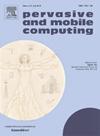TrustMD — A multi-layer framework for domain, edge and D2D caching based on trust dissemination and blockchain
IF 3.5
3区 计算机科学
Q2 COMPUTER SCIENCE, INFORMATION SYSTEMS
引用次数: 0
Abstract
Device-to-Device communication (D2D), combined with edge caching and distinct domains, is a promising approach for offloading data from wireless mobile networks. However, user security is still an open issue in D2D communication. Security vulnerabilities remain possible as a side effect of enabling straightforward, direct, and spontaneous interactions between untrustworthy users. To address this issue, this work involves designing TrustMD (Trust Multiple Domain), a multi-layer framework combining diverse technologies inspired by blockchain and trust management to develop a secure and scalable framework for multi-domain, edge, and D2D caching layers. Specifically, TrustMD combines edge trust storage with blockchain for distributed storage management in a multi-layer architecture designed to store trust control data in edge efficiently and D2D networks across different domains. Our experiments with TrustMD showed a significant improvement in data goodput, reaching as high as 95% of the total network throughput. In contrast, state-of-the-art approaches without trust control dissemination achieved at most 80%. Even though we observed a 7% increase in D2D overhead, TrustMD can effectively control latency levels. TrustMD managed security effectively without compromising network performance, reducing false negative rates up to 31% in the best-case scenario. TrustMD offers a scalable and effective security solution that boosts network performance and ensures robust protection.
TrustMD——基于信任传播和区块链的域、边缘和D2D缓存的多层框架
设备到设备通信(D2D)结合边缘缓存和不同域,是一种很有前途的从无线移动网络中卸载数据的方法。然而,在D2D通信中,用户安全仍然是一个悬而未决的问题。在不可信的用户之间支持直接、直接和自发交互的副作用仍然存在安全漏洞。为了解决这个问题,这项工作涉及设计TrustMD(信任多域),这是一个多层框架,结合了受区块链和信任管理启发的各种技术,为多域、边缘和D2D缓存层开发一个安全且可扩展的框架。具体来说,TrustMD将边缘信任存储与区块链相结合,在多层架构中进行分布式存储管理,旨在有效地将信任控制数据存储在边缘和跨不同域的D2D网络中。我们对TrustMD的实验表明,在数据传输方面有了显著的改善,达到了总网络吞吐量的95%。相比之下,没有信任控制传播的最先进方法最多达到80%。尽管我们观察到D2D开销增加了7%,但TrustMD可以有效地控制延迟水平。TrustMD在不影响网络性能的情况下有效地管理安全性,在最佳情况下可将误报率降低31%。TrustMD提供了一个可扩展和有效的安全解决方案,提高网络性能,并确保强大的保护。
本文章由计算机程序翻译,如有差异,请以英文原文为准。
求助全文
约1分钟内获得全文
求助全文
来源期刊

Pervasive and Mobile Computing
COMPUTER SCIENCE, INFORMATION SYSTEMS-TELECOMMUNICATIONS
CiteScore
7.70
自引率
2.30%
发文量
80
审稿时长
68 days
期刊介绍:
As envisioned by Mark Weiser as early as 1991, pervasive computing systems and services have truly become integral parts of our daily lives. Tremendous developments in a multitude of technologies ranging from personalized and embedded smart devices (e.g., smartphones, sensors, wearables, IoTs, etc.) to ubiquitous connectivity, via a variety of wireless mobile communications and cognitive networking infrastructures, to advanced computing techniques (including edge, fog and cloud) and user-friendly middleware services and platforms have significantly contributed to the unprecedented advances in pervasive and mobile computing. Cutting-edge applications and paradigms have evolved, such as cyber-physical systems and smart environments (e.g., smart city, smart energy, smart transportation, smart healthcare, etc.) that also involve human in the loop through social interactions and participatory and/or mobile crowd sensing, for example. The goal of pervasive computing systems is to improve human experience and quality of life, without explicit awareness of the underlying communications and computing technologies.
The Pervasive and Mobile Computing Journal (PMC) is a high-impact, peer-reviewed technical journal that publishes high-quality scientific articles spanning theory and practice, and covering all aspects of pervasive and mobile computing and systems.
 求助内容:
求助内容: 应助结果提醒方式:
应助结果提醒方式:


